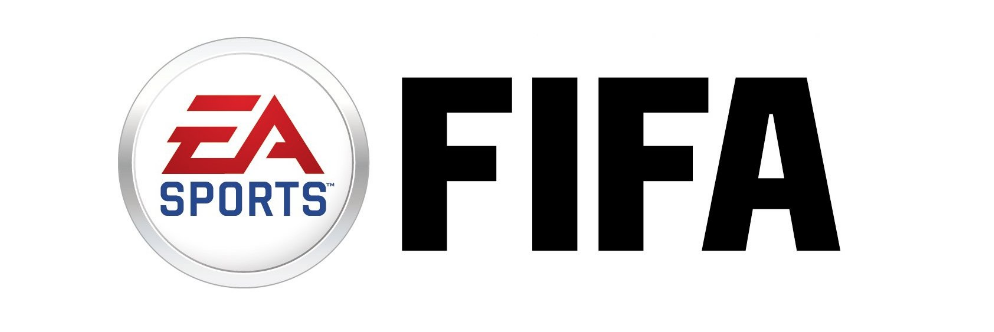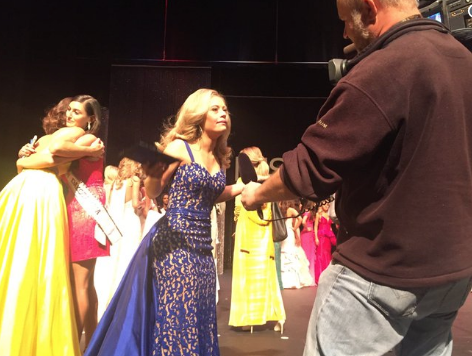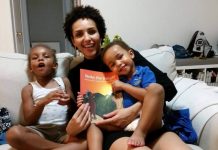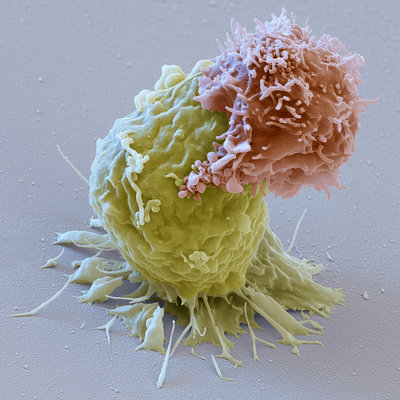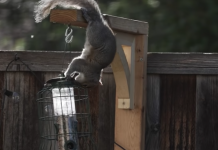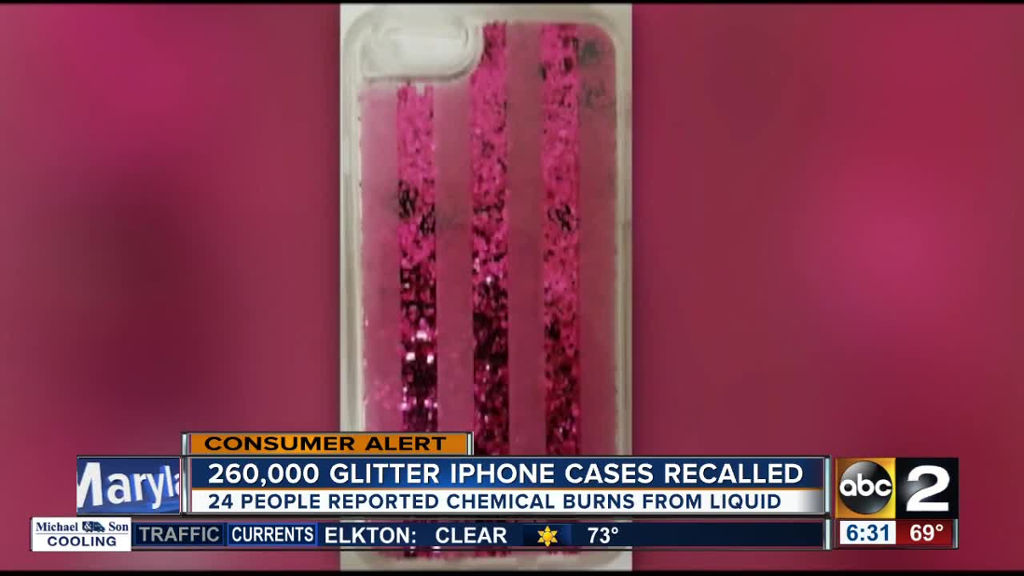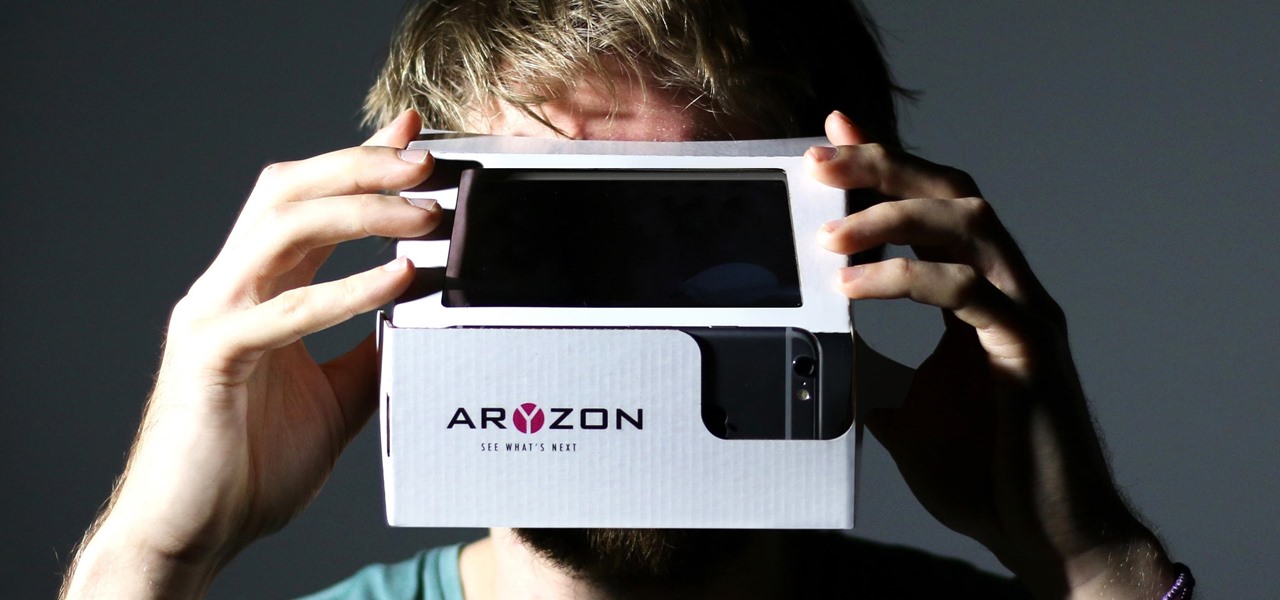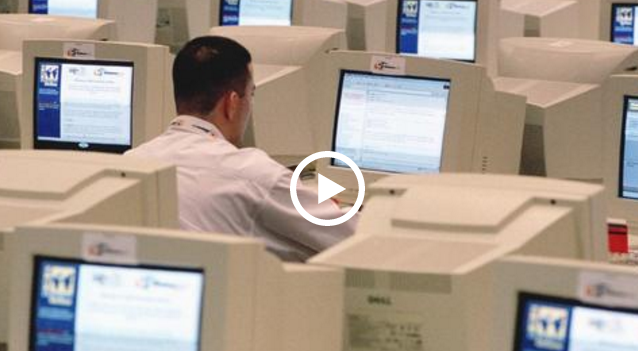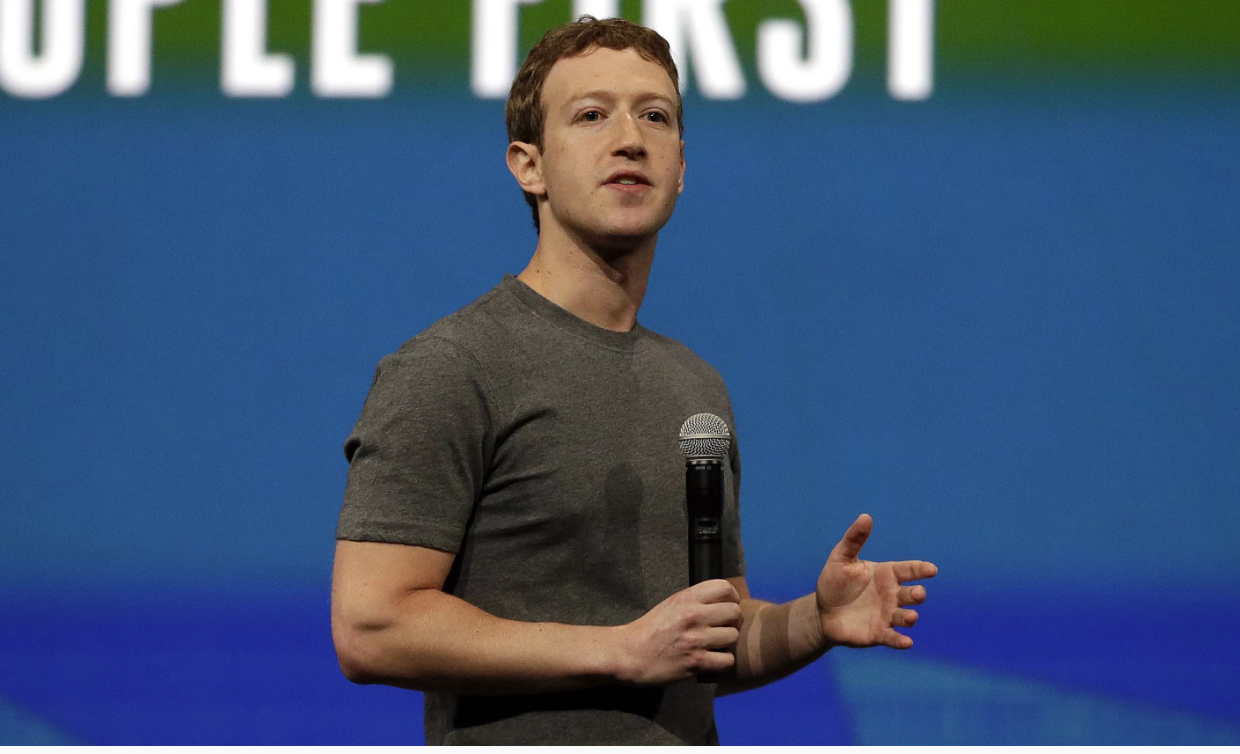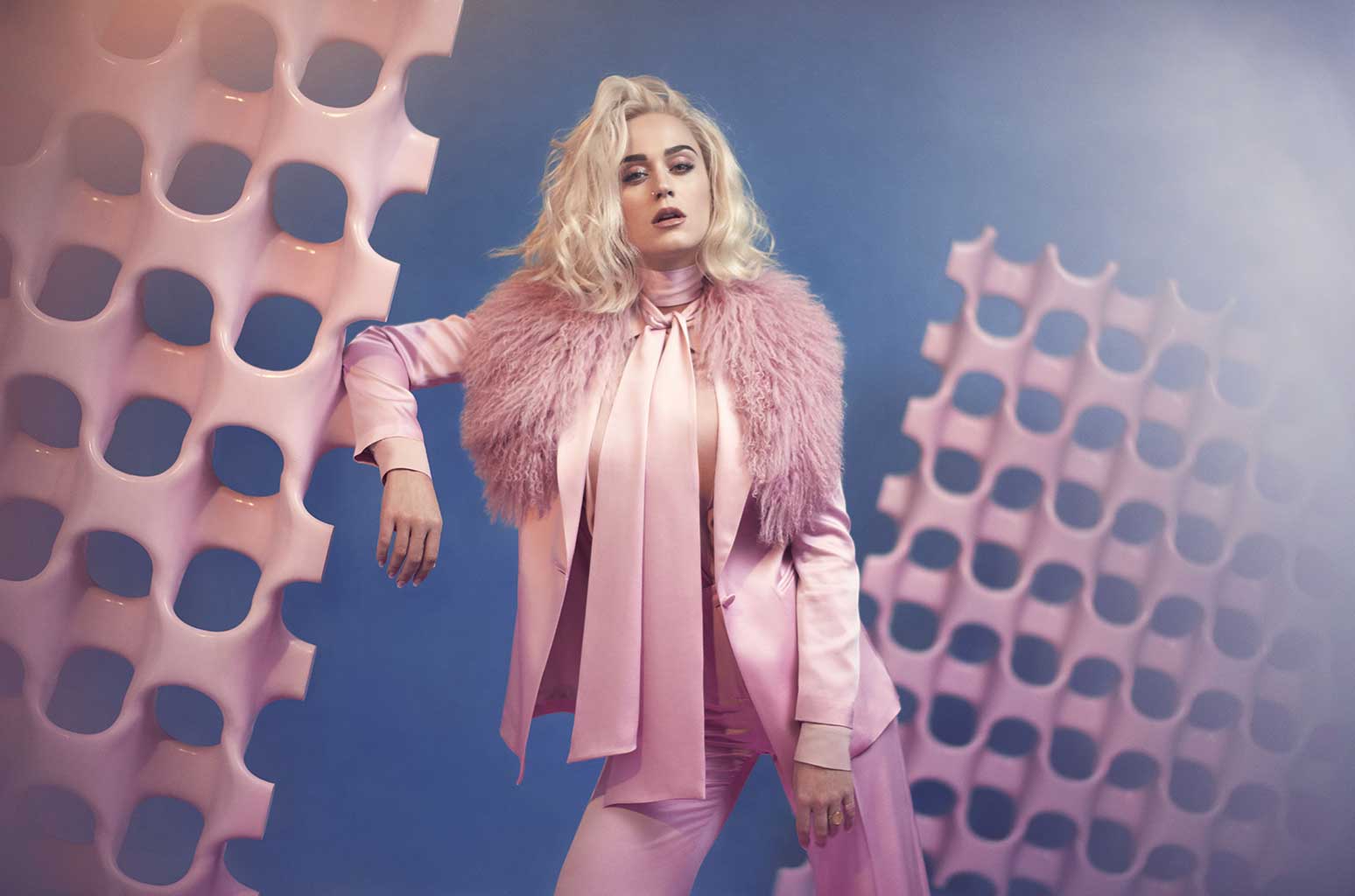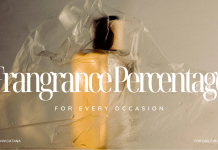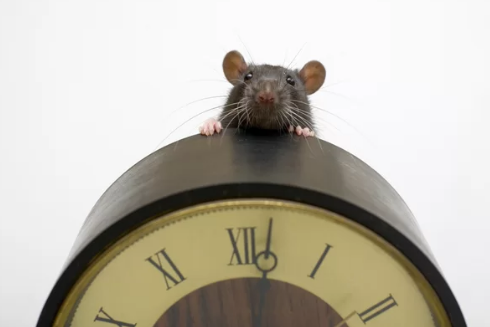In an echoing studio in Brooklyn’s hipster Red Hook neighborhood, Grace Coddington and a team of earnest Comme des Garçons minions are fastening Katy Perry into something that resembles a child’s toy car fashioned from jade-green fake-Astrakhan fur with a many-tentacled faux–ostrich feather boa shimmying at her hips like an Elizabethan life preserver. “Done everything else,” says Perry drily, “why not check this box?”
Nugget, Perry’s adorable, ginger biscuit–colored micro teacup poodle, gambols at her feet, which are being coaxed into shoes with long, pointed toes, like those of medieval knights in brass rubbings. If her arms weren’t entirely constrained by Rei Kawakubo’s conceptual straitjacket, she would sweep Nugget up in them. “I collect tiny things,” says Perry. “She brings so much love. When I wake up, she’s the only serotonin I need.”
Hair artist Julien d’Ys selects a wig from an army of Styrofoam heads that bear scissored neon Dynel bangs, peroxided eighteenth-century sausage curls, lilac glass stalagmites, and a Miss Havisham mess of ancient tulle and orange blossom made to wear with a dress from Rei Kawakubo’s 2005 Broken Bride collection.
Perry appraises herself in the mirror. “Let me know when Zoolander 3 starts shooting,” she deadpans. “These clothes, honestly, are walking pieces of art,” she adds, serious now. “It’s the redefinition of sex; the sex of the mind.”
Artist Dustin Yellin’s Pioneer Works studios are next door; hearing that Perry is in the house, he comes to pay court to the performer who has engaged with artists since she collaborated with Will Cotton on her candylicious 2010 Teenage Dreamalbum cover and “California Gurls” video. “Fashion is just a language,” says Perry. “It’s storytelling. I am so encouraged by the big morph in fashion that’s happening at the moment. Everybody is shape-shifting, changing, adapting.” No one more than Perry herself, it would seem.
“She’s a chameleon,” agrees photographer Mert Alas admiringly, and today, beneath the volumes and layers, Perry is a beautiful, fine-boned Hitchcock blonde. Actually, that blonde flip is an illusion; Perry’s real hair is resting after she’s thrown every improbable rainbow color at it. “I’m in the process of going to platinum,” she confides, “like my status!”
On his computer screen, Alas, retouching maestro, is busily experimenting with Warholian combinations of turquoise eye shadow and scarlet lips. “Are we doing the cover of i-D now, babes?” asks Perry in the Mockney accent of her troublesome ex-husband, the British comedian Russell Brand, and her recently extinguished flame, Orlando Bloom.
Perry, born Katheryn Hudson, has been a performer since childhood, the self-confessed “black sheep” daughter of evangelical Christian pastors who carefully sheltered her from the pernicious modern world in “a bubble beyond the bubble” of like-minded community and schooling. “The schools were really makeshift,” Perry recalls. “Education was not the first priority. My education started in my 20s, and there is so much to learn still.” She was not, for instance, “allowed to interact with gay people,” she remembers, and “there is some generational racism. But I came out of the womb asking questions, curious from day one, and I am really grateful for that: My curiosity has led me here. Anything I don’t understand, I will just ask questions about.” If Perry doesn’t know a word (nimble, monosyllabic), or a reference (Picasso’s Guernica, Vanity Fair’s Hive), she inquires about it. She even sees her epic world tours as a process of “reeducation”—“really I am on this genius road trip throughout the world because when we tour, we tour very well and we see the sights.”
Nevertheless, “I miss references all the time,” she admits. “Amy Grant was our Madonna. We knew about Madonna and Marilyn Manson in my family because we picketed their concerts.” At a Manson concert in Santa Barbara, she handed out pamphlets titled How to Find God. She ended up going in to watch the performance with her youth pastor and, to her surprise, found it “really interesting and weird—I got it. But my house was church on Sunday morning, church on Sunday night, church on Wednesday evening; you don’t celebrate Halloween; Jesus gives you your Christmas presents; we watch Bill O’Reilly on TV. That was my whole childhood and youth and early teens. I still have conditioned layers dropping off of me by the day.”
She has finally started to follow Bill O’Reilly again—on Twitter. “I want to know what’s going on on the other side,” she explains. “I don’t want to be ignorant.”
At thirteen Perry left home in Santa Barbara, with her mother as chaperone, to record a gospel album in Nashville. Two years later she discovered the operatic rock of the seventies group Queen and their sexually provocative lead singer, Freddie Mercury. “I had never heard such an imaginative explanation of how to live,” she remembers. “That was my first perspective on that world, and I just loved it. I felt so free and accepted.” At seventeen, fueled by this epiphany, she moved to Los Angeles to pursue the career she wanted.
She found additional escape in the sort of Hanna-Barbera colored fantasy world that she would eventually bring to life in her videos and performances (witness—as I did—her descent to the stage at the 2009 Grammys in a golden banana to sing “I Kissed a Girl” in a staging that she describes as “Chiquita banana, Carmen Miranda with Lucille Ball, Betty Boop, and Swarovski”).
As a young teen she was swing dancing and wearing pencil skirts and pearl–buttoned cardigans that she bought at thrift stores and charity shops: Her parents relied largely on church collections for their livelihoods. “I have had this body for a very long time,” she says, “and I would pour into those clothes very well—so it worked!
In sixth grade Perry spotted a fake leopard-fur coat in the window of a vintage store. She wanted it for Christmas, but at $175 it was a remote dream. In a Christmas miracle, however, Jesus delivered. “All the kids made fun of me,” she remembers, “but I knew I was doing something right when the hot moms came over to me at school and were like, ‘Where did you get that coat, sweetie?’ ”
Today, however, she claims that although she still loves pink, she wants to move on from the “cutesy.” “I like more androgynous, architectural lately,” she says. “I am happy to be another interpretation of myself.”
When she isn’t being “Katy Perry” she wears a “uniform”—a black-and-white Adidas track suit and Stan Smith trainers—to foil the paparazzi hungry for new looks. “When I am on, I am on,” Perry explains, “and when I am not, I’ve got a different job to do. Even if you’re wearing a scarf, you’re an advertisement, and the music is the thing that I am selling.”
At 32, Perry is recalibrating her life on many levels. “It’s a nice place to be,” she says of her age. “I love it! I wouldn’t give anything to go back to my 20s; I’m so much more grounded. And I’ve learned a lot of lessons—patience, the art of saying no, that everything doesn’t have to end in marriage. That your education can start now. I blasted off on a rocket, holding on for dear life,” she adds, remembering her career breakthrough with Teenage Dream at the age of 25, followed by five Number One singles—all after the agonizingly slow, vulnerable Los Angeles years of false starts, canceled recording deals, and the wild-child antics that followed her sequestered upbringing. “But I had so much ambition and determination, and that’s what kept me going. The rocket was riding me for a bit, but now I am riding the rocket.”
Perry is adjusting her style choices, too. “I am pushing for my own evolution,” she says, “just making better choices as far as style goes. I don’t want to get stuck in a way of thinking or doing or presenting.”
The staging of her new single “Chained to the Rhythm” at the 2017 Grammys, and the video that was released soon after, are a case in point. For the Grammys she collaborated with Es Devlin, whose eclectic portfolio runs the gamut from Benedict Cumberbatch’s reimagined Hamlet at London’s Barbican Theatre to the London Olympics closing ceremony, several of Vuitton’s runway shows, and Kanye and Jay-Z’s “Watch the Throne” arena tour. “She is fantastic,” says Perry, “and she knows about delivering a message.” In Devlin’s concept, Perry’s dancers manipulate the elements of a storybook clapboard house to form the Constitution. At the BRIT Awards, ten days later, her set was even more explicit, including giant Day of the Dead puppet figures representing President Trump and Britain’s “Hard Brexit” prime minister, Theresa May. Expect more Devlin on Perry’s upcoming tour later this year.
For the singer, message is everything. “I’ve seen behind the curtain,” she says, “and I can’t go back. I used to be the queen of innuendo, everything done with a wink,” she adds. “Now I want to be the queen of subtext—which is a cousin to innuendo, but it’s got more purpose.”
I witness Perry’s “purposeful pop” on clear display at Magic Mountain, an amusement park 30 minutes northwest of Los Angeles, when I visit on the third and final day of her “Chained to the Rhythm” video shoot with director Mathew Cullen.
“Welcome to Oblivia, where everything is always rosy!” she says by way of greeting, dressed as a futuristic Marilyn in gleaming silver and white. “I’m such an amusement-park junkie. I’m a Club 33 member at Disneyland.” She is surrounded by hordes of extras—150 all told—dressed by B. Åkerlund in appropriately cartoonish mid-century clothes, as though the teenagers in Grease had been recolored by Kenny Scharf.
Against the gravity-defying loops and spirals, as Perry says, “we are creating this absurd world where all the rides make you crazier and crazier. Stylistically, it’s kind of like a sci-fi fifties take on Pleasure Island from Pinocchio.” The rides are metaphors for such contemporary concerns as the mortgage and loan crises, the poisoned-water catastrophe in Flint, Michigan, and “the addiction we get from posting and curating our lives on social media to look like they’re perfect, when they’re not,” as Perry notes.
“I don’t think you have to shout it from the rooftops,” she says of her political views—she performed at the Democratic National Convention and campaigned for Hillary Clinton during the 2016 presidential campaign—“but I think you have to stand for something, and if you’re not standing for anything,” she adds pointedly, perhaps aiming at some of her deliberately apolitical confreres, “you’re really just serving yourself, period, end of story. ‘California Gurls’ and fluffy stuff would be completely inauthentic to who I am now and what I’ve learned,” she adds. “I do believe we need a little escapism, but I think that it can’t all be that. If you have a voice you have a responsibility to use it now, more than ever.”
Post election, Perry admits, “I was really disheartened for a while; it just brought up a lot of trauma for me. Misogyny and sexism were in my childhood: I have an issue with suppressive males and not being seen as equal. I felt like a little kid again being faced with a scary, controlling guy. I wouldn’t really stand for it in my work life, because I have had so much of that in my personal life. But it’s an awakening that was necessary because I think we were in a false utopia . . . we can’t ever get that stagnant again. I am so grateful that young people know the names of senators. I think teenage girls are going to save the world! That age group just seems to be holding people accountable. They have a really strong voice—and a loud one.”
By the end of the last day of filming, Perry is remarkably perky. “Waking up at 4:30 is really, really difficult for me,” she admits, “but if I don’t participate in an A-plus way, it’s only to my detriment. Do I want to sabotage me?!” It helps that her glam squad practices what she dubs “Sleeping Beauty makeup” while she naps. But Perry’s real energy secret is a daily, 20-minute Transcendental Meditationbreak, a practice that Russell Brand introduced her to six years ago. “It’s a game-changer,” she insists. “I will feel neuro pathways open, a halo of lights. And I’m so much sharper. I just fire up!”
After the seventeen-month-long Prismatic World Tour, and the 2015 Super Bowl, Perry took a six-month break—her first since 2008—before working on new music. She retreated from her Los Angeles home to the “bubble and sanctuary” of Santa Barbara (“so quaint and cute, it’s like the French Riviera without the snootiness”), to be close to her beloved siblings, and her parents, with whom she now agrees to disagree. Five years ago Perry began seeing a therapist. “It’s changed my life,” she says. “When I am in the room I am just Katheryn Hudson, which is amazing because people in my position hear yes too much, and it kills them or makes them completely disconnected from reality—and I don’t want that.”
Refreshed by her break, Perry was ready to begin work on her new songs last June, and by the end of the year she had more than 40 in progress; perhaps a dozen will make it to the album. For 2013’s Prism, she was working on two similar songs, “Black Widow” and “Dark Horse.” She released the latter, while Iggy Azalea and Rita Ora subsequently recorded “Black Widow” (Britney Spears claimed “Passenger”). “I am just happy they get a home, echoing into the universe forever,” says Perry wryly, “because at the end of this—when I decide to loosen my corset even more, when I can put no more filler in, when there is no more skin left to pull—I can still be a songwriter!”
The Santa Barbara hiatus gave her time to “apply in real time” the lessons she is observing about how to create desire, and the fast-changing ways that her consumers—especially her young fans—digest music. “And then momentum, momentum, momentum,” she adds. “I just love a little buildup. In a past life I was a marketing CEO! I use both sides of my brain, right and left.”
My last big moment with the endlessly surprising Ms. Perry is a dinner in Manhattan where she has come for a few days to shoot this story (she maintains a light-flooded, cozily appointed apartment there, high above the Hudson River). To my astonishment, she picks February 14 to get together. “You’re my hot date for tonight!” she trills playfully. “I hope you live up to all my expectations. I hope we take it all the way!”
She has chosen a cozily unpretentious Italian restaurant in Tribeca—the chef from a favorite place in Florence opened it. I’m unusually punctual, and my date gives me plenty of time to take in the romantic scenes playing out around me before she arrives.
When Katheryn Hudson finally appears, she’s in a slender Gucci coat (the cheery red of the balloons kissing the restaurant ceiling), big hoop earrings, and bug-eyed glasses (“They are a lens of protection, so I deflect rather than attract”). Her hair is scraped into a ballerina’s chignon. Only those vast, limpid eyes, framed by tarantula lashes, give her away. She is bearing a long-stemmed apricot-pink rose and a valentine card—“Roses are red, violets are blue,” she has written, “I hope this turns out awesome or whatever”—all of which makes me feel like a perfect cad because I’m bearing a felt-tip pen, a lilac notebook, and a recording device. I tell her that I was rather hoping for her sake that some dashing swain might have swooped in to snatch her away from my tender ministrations.
“This is like National Donut Day to me; it’s like a made-up holiday,” she says, sighing. “I think I broke up with Valentine’s Day in my 20s. It’s just so . . . pressure-filled: It’s not easy loving me, but it seems like you are up for the challenge tonight!”
And then she is off on her conversational roller-coaster ride, and there is no stopping her.
Burning Man (“It’s fully inspirational . . . like Tokyo on Mars!”). The Grammys(“We as a culture need to be inclusive and diverse, and I believe that that is not yet represented at the Grammys”). Adele (“I really appreciate people who don’t fall down the rabbit hole and have a grasp on what’s real”). Madonna (“She did the art of evolution so well”). Cher (“I love her outspokenness—she has shown up lately for women, and I love that”). Beyoncé (“Our modern-day Michael Jackson. She has come into her own, showing that it’s OK to be strong and vulnerable at the same time—and that vulnerability is not a weakness, it’s actually a strength”). The Election. (Don’t get her started.)
Perry has been sober for a month (“I go through little periods when it’s time to cleanse my mind”). Instead, she focuses on a smorgasbord of different pastas and risottos that she has specially ordered (“Yay, this is my Valentine!”) and opts for the house special cheesecake as a final flourish. (Luckily, those Kawakubo creations are very forgiving.)
Three hours later we are the last holdouts in the joint—sundry couples having sloped out throughout the evening—and I’m still hanging on her every word. The waiters have been coughing and fidgeting at a respectful distance for a good 40 minutes before we finally head off ourselves.
“I don’t cure cancer or anything,” Perry says, those famously luminous eyes a-twinkle again, “but I know that I can bring light and joy and happiness in tiny installments of three minutes and 30 seconds. That does something,” she adds as she is swept up in a discreet flurry of security and a chauffeured SUV. “That lifts spirits.”





